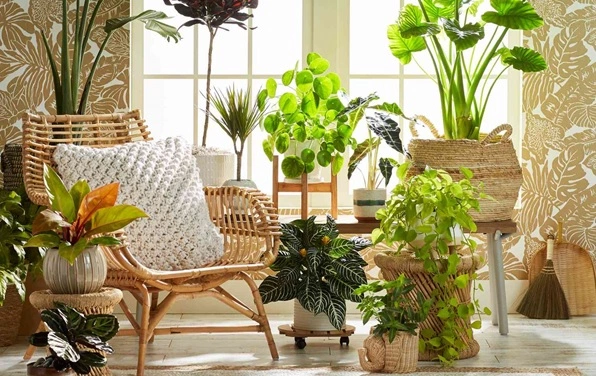
Indoor gardening has gained tremendous popularity in recent years as more people seek to bring the beauty and benefits of nature into their homes. Whether you have a spacious house or a compact apartment, indoor gardening allows you to cultivate a variety of plants and create a thriving green oasis right inside your living space.
Benefits of Indoor Gardening:
Improved Indoor Air Quality: Indoor plants act as natural air purifiers, filtering out pollutants and releasing oxygen, which can enhance the air quality in your home. They can also help regulate humidity levels, creating a more comfortable and healthier living environment.
Stress Relief and Mood Enhancement: Studies have shown that being surrounded by greenery can reduce stress, boost mood, and promote a sense of calm and well-being. Indoor gardening provides an opportunity to connect with nature and create a tranquil space that promotes relaxation and mental clarity.
Enhancing Aesthetics: Indoor plants are excellent décor elements, adding a touch of natural beauty to any space. They can be used to create visually appealing displays, vertical gardens, or focal points that bring life and freshness to your interior design.
Essential Techniques for Indoor Gardening:
Light Requirements: Understanding the light needs of your plants is crucial for successful indoor gardening. Most plants require bright, indirect light, so choose appropriate locations near windows or provide artificial lighting options like fluorescent or LED grow lights for areas with limited natural light.
Proper Watering: Overwatering is a common mistake in indoor gardening. Ensure your plants are potted in well-draining soil and water them only when the top inch of soil feels dry. Avoid letting plants sit in standing water, as it can lead to root rot.
Temperature and Humidity: Different plants have specific temperature and humidity requirements. Research the optimal conditions for your chosen plants and provide suitable microclimates within your home, such as grouping plants with similar needs or using humidifiers or pebble trays to increase humidity levels.
Selecting Plants for Indoor Gardening:
Succulents and Cacti: These low-maintenance plants are well-suited for indoor environments, as they can tolerate drier conditions and require minimal watering.
Herbs: Growing herbs indoors allows you to have a fresh supply of culinary delights year-round. Popular choices include basil, rosemary, mint, and parsley.
Leafy Greens: Plants like lettuce, spinach, and kale can be grown indoors, providing a continuous harvest of nutritious greens for salads and smoothies.
Tips for Indoor Gardening Success:
From
Dr. Ravi Prakash Mishra
Asso. Prof./ Head
June 10, 2023RECENT POSTS
CATEGORIES
TAGS
Advocate Agriculture Agriculture future AI Architecture Architecture design artificial intelligence BAJMC BAJMC Courses BA Psychology Basic Science Business management career Career-Specific Education career scope CHEMISTRY Civil engineering commerce and management Computer Science CSE ecommerce education Engineering english program Entrepreneurship farming Fashion Design Financial growth health Innovations Journalism journalism and mass communication law Law career Machine Learning MA Psychology Master degree mathematics MBA Mechanical Engineering painting Pharmacy Research and Development Urban planning
Address: Nachauli, Jasana Road, Faridabad, Haryana
Head Office Address: C-72, Second Floor, Shivalik, Near Malviya Nagar, Above HDFC Bank, New Delhi 110017
Toll Free: 1800-120-4613 | 8447744304 | 8447744306 | 8447744308 | 8447744309
Email:
[email protected]
[email protected]
[email protected]
[email protected]
Copyrights © 1998 - 2024 Lingaya's Vidyapeeth (Deemed To Be University). All rights reserved.